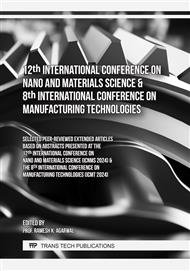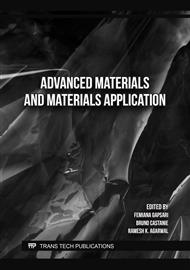p.3
p.11
p.21
p.27
p.35
p.43
p.53
p.59
Microstructure and Mechanical Characteristics of Friction Welded Joint between Alumina and Aluminum Casting Alloy
Abstract:
In this study, the Al2O3 round bar and Al-Si12CuNi (AC8A) round bar were joined by friction welding. AC8A is a typical piston material treated by the heat treatment T6. The parameters of the joining condition are friction time and upset pressure. SEM observed the microstructure at the interface region of joined materials. 1) Judging from these photographs, the damages to the microstructures at the interface region of joined materials by upset pressure are more significant than those caused by friction time. 2) The relationship between the joint conditions and mechanical characteristics from three points of bending test results for the joint material specimens. 3) The residual stresses around the interface were measured by the Raman spectroscopy method. There is a possibility that the friction welding conditions are correlated to the residual stresses.
Info:
Periodical:
Pages:
27-33
Citation:
Online since:
May 2024
Authors:
Keywords:
Price:
Сopyright:
© 2024 Trans Tech Publications Ltd. All Rights Reserved
Share:
Citation:



